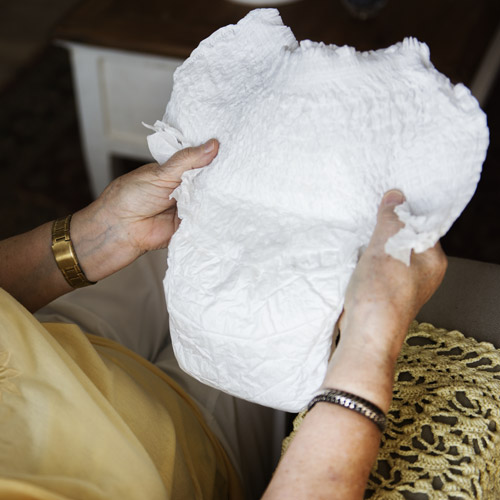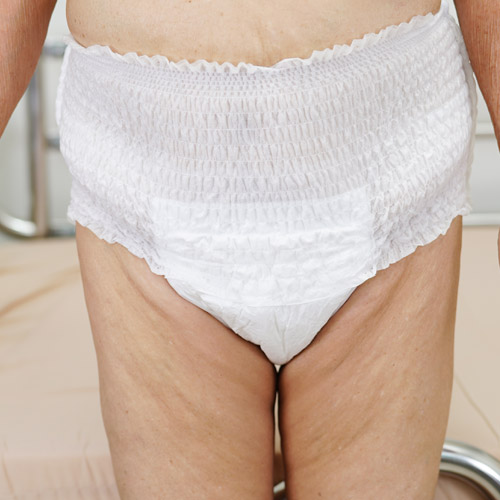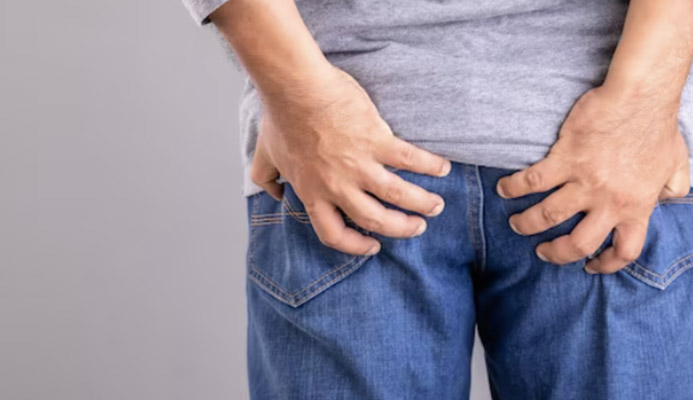
There is a particular proctological clinical condition, which is very disabling and causes extreme social embarrassment and actual problems in the patient's daily life, called a open anus.
The fecal incontinente is the inability of the anal orifice to close completely and tighten when not used for defecation, causes pathological situations of great suffering, both physical and psychological, such as fecal incontinence.
Read this page to learn what, exactly, a open anus is and what can be done to treat it.
Fecal incontinence is a condition that is always very little considered, often and willingly judged 'inevitable' in patients of advanced age.
However, this is not at all true, on the contrary: in many cases, fecal incontinence can be resolved, and in many other cases still alleviated, bringing the patient's quality of life, especially if elderly, back to an excellent level.
Rehabilitative sphincter treatments, combined with proper dietary courses and resumption of anorectal sensitivity, are very effective tools, even for bedridden and difficult-to-manage patients.
What is the anal orifice?

The anal orifice or anal verge is the final part of the anal canal itself and is, along with the rectum, the last part of the intestine and, by general definition, the very last part of the entire long gastrodigestive tube.
At the anatomical level, the anus is located in that region called the posterior perineum, and it appears as an orifice, elastic and with both voluntary and involuntary muscle capacity, located at the base of the buttocks groove.
When contracted (in the resting condition, as it is called in medical jargon) the anus appears enclosed by many pleats (the anal folds), in which, gradually, the skin turns into mucous membrane.
This resting condition, i.e., closing of the orifice, is dependent on two donut-shaped muscles that surround the entire anus, called sphincter muscles.
Specifically, we have two well-defined sphincters: the internal sphincter, an involuntary smooth muscle, and the external sphincter, a voluntary striated muscle.
The internal sphincter is surrounded by the external sphincter, thus forming two concentric doughnuts.
Unlike the internal sphincter, which is involuntary and therefore cannot be controlled at will, the external sphincter is voluntary, allowing us to control the anal opening at our will.
During defecation, the internal sphincter relaxes, thus allowing the anus to open to allow the passage of stool and thus complete evacuation.
The external sphincter participates actively and massively in this process, assisting its internal 'colleague' and, in cases where it is impossible to defecate due to logistical or social problems, has the fundamental task of holding stool, delaying its expulsion.
Given that the importance of proper closure of the anus after defecation lies primarily in the effectiveness of the contraction of the external sphincter, any damage or malformation of the same leads to serious repercussions on the continence of the entire anal orifice.
What is meant by a fecal incontinente?

In Medicine, 'open anus' refers to the clinical condition in which the anal orifice at rest fails to tighten completely and properly, in fact remaining partially open.
It is for all intents and purposes the main symptom of fecal incontinence, that is, the condition that makes it impossible, or otherwise difficult, for the patient to voluntarily contain stool and gas from the intestines.
The open anus can be of varying severity, that is, its closure at rest can be partial or even none: depending on the percentage of anal orifice closure, therefore, there will be partial or complete incontinence.
The first obstacle to the resolution of anal incontinence is given by just. By the patient himself.
In fact, for reasons of shame or fear, the patient often does not go to the doctor, attempting to solve the problem with his own remedies, which almost always coincide with wearing an adult diaper.
This attitude should be avoided: modern bowel and sphincter rehabilitation protocols can bring great relief and greatly reduce fecal incontinence, sometimes even resolving it altogether, but the patient must trust the Physician, deciding to make a proctological examination.
What are the causes of fecal incontinence?

At present, there are three main causes that are considered to originate fecal incontinence:
- Reduced rectal compliance and rectal reservoir (in other words: rectal pressure and its volumetric relationship to the boundary viscera);
- Reduced rectal sensitivity;
- Damage to or sphincter and pelvic floor muscles
Open anus and related fecal insufficiency due to damaged or otherwise malfunctioning sphincter muscles or component muscles of the pelvic floor are, statistically, an important percentage of all fecal incontinence.
These sphincter injuries can be distinguished into iatrogenic or traumatic, and their correct clinical identification is of paramount importance in the diagnosis and treatment of fecal incontinence.
Iatrogenic and traumatic causes: when sphincter muscles become damaged
Sphincter muscle injuries, one of the four main causes of fecal incontinence, are divided into iatrogenic causes and traumatic causes.
Injuries due to surgery on the rectum, anus, and intestines belong to iatrogenic causes.
Also included in the calculation are, for women, gynecological and obstetrical surgeries.
Instead, all accidents or trauma suffered to the pelvis, anus, genitals and pelvic floor area in general belong to traumatic causes, such as:
- Fractures
- Cutting injuries;
- Burns,
- Gunshot wounds;
- Sexual violence;
- Long and complicated travails;
- Natural childbirth;
- Neurological damage in general
Then there are other pathological conditions that, although not completely assimilated in traumatic causes, are of primary importance in fecal incontinence.
Among these, we can certainly mention weakening of the pelvic floor and descending perineum syndrome, rectal prolapse, and diabetes mellitus, which, in the long run, causes impaired anorectal sensitivity due to known diabetic neuropathy.
What are the symptoms of open anus and fecal incontinence?
The open anus, with its inability to close properly at rest, is itself a symptom of fecal incontinence.
Having specified this, the extremely disabling symptom that often puts anguish in the patient is the involuntary loss of fece and intestinal gas, whether at rest or during minor exertion.
Depending on the entity of damage or exhaustion of the sphincters, thus in essence the degree of involuntary opening of the anal orifice, such involuntary leakage will be more or less pronounced.
The incontinent patient is characterized by difficult or impossible control of evacuations, both solid and gaseous, which he often cannot even perceive.
Continuous leakage, in the long run, can cause that particular condition known as 'wet anus', in which the skin, which never stays clean for long during the day, macerates and causes frequent anitis (dermatitis of the anal and perianal area).
In turn, anitis causes redness, burning, almost always accompanied by anal itching.
In addition to these physical symptoms, however, the deep psychological implications of this particular pathological condition should not be ignored.
In fact, the patient with fecal incontinence tends to become depressed and, slowly, to isolate himself from society, for fear of being laughed at or taunted in the (inevitable) situations of involuntary stool leakage or flatulence in public.
This shame, especially in the elderly patient, leads the individual not only to socially isolate himself, but also to constantly put off medical examination and, consequently, the right treatment.
In the young child, fecal incontinence takes the medical name of encopresis.
Encopresis is considered physiological in the very first years of life, but it can become a disorder of a generally psychosomatic nature if it persists after the age of four years.
The causes of encopresis in children are many: fromunresolved psychological problems (conflicts with parents, absence of a father figure, anxiety, stress, etc.) to physiological problems, such asan anus stenosis, a problem with external sphincter control, or even poorly treated fissures.
The task of pediatric proctology is to determine the cause of the child's encopresis, first of all shedding light on its nature, psychological or physiological.
How common is fecal incontinence?
Fecal incontinence is a widespread condition in the world population, which has a definite correlation with advancing age.
World Health Organization estimates that as much as 5% of the entire world population is affected, but this figure (already decidedly alarming in itself, considering the nine billion humans currently living on the planet) grows to 18% in adult patients over the age of 18-20, and reaches 32% of patients in the third decade of life.
These numbers, truly impressive worldwide, are perhaps even more alarming in countries with a high percentage of the population over 50.
It should be borne in mind that these statistical percentages are, however, susceptible to defect, for a very understandable reason: often the patient, out of shame, refuses to perform a proctological examination or even to talk about it with a General Practitioner, and this therefore makes it presumable to think that the actual impact on society of fecal incontinence is much higher.
Anal incontinence is a condition that can afflict both genders, but it spills over with incredible majority percentage to the female population.
In fact, women are about nine times more likely to develop fecal incontinence than men, and this is most likely due to increased exhaustion of the pelvic musculature, mainly due to pregnancy, labor and delivery.
How is the diagnosis of fecal incontinente made?
Fecal incontinence requires a particularly precise and careful diagnosis thorough medical history.
Diseases such as diabetes, previous injuries to the pelvic area, trauma to the spine, or congenital malformations (such as spina bifida, for example) should be carefully evaluated if present.
The history is then followed by the abdominal and proctological examination, where the Proctologist Physician makes sure, by digital inspection, of the state of the anus, whether or not it is beating and some incidence.
The proctological examination, performed in modern medical offices by videoproctoscopy, is usually accompanied by anorectal manometry for evaluation of sphincter tone and, at the discretion of the Physician, also an endoanal ultrasound.
The latter examination is particularly useful where the physician suspects internal sphincter muscle injury or sphincter malformation.
When in doubt, the physician may prescribe a Nuclear Magnetic Resonance Imaging examination of the pelvic area to accompany the examination or also an ultrasound scan, which is especially useful in determining whether there are morphological changes in the last part of the intestine.
What is the appropriate therapy for fecal incontinence?
Treatment for fecal incontinence is prescribed by the Physician after accurately identifying the cause of the lack of proper sphincter function.
However, the diagnosis of the root cause of the open anus is not enough: the patient's general health condition, especially if he or she is in the third stage of life, should also be considered.
There is a different management of the sufficient but incontinent patient than of a non-self-sufficient and incontinent patient, and this consideration should always be given due consideration by the physician when prescribing one or the other therapy.
In general, therapy for fecal incontinence aims to restore good sphincter tone where possible, thereby improving anal orifice closure and, concomitantly, also improving the patient's clinical condition.
Modern sphincter rehabilitation protocols are called RFSA (Functional Rehabilitation of Anal Sphincters), and they involve a mixture of different physiotherapeutic and medical techniques, which are:
- Restoration of well-formed and consistent stool is essential to help the patient better control stools;
- Physiokinesitherapy and rehabilitative gymnastics of the pelvic floor;
- Pelvic floor electrostimulation therapy and anal sphincters;
- Electromyographic (and pressure) biofeedback
These techniques, combined in the RFSA protocol, involve different sessions of about one hour in which the patient undergoes electrostimulation, physiotherapy, and sensory biofeedback.
The RFSA protocol is quite lengthy (15 sessions in the initial, tri-weekly phase and three more cycles of 6 sessions in the booster phase) but, if well carried out, it almost always succeeds in achieving excellent results, restoring fecal continence wholly or in the majority part.
The rehabilitation sessions must obviously be coupled with proper diet and bowel management to promote solid, easily expelled stool, thus avoiding diarrheic or constipated episodes.
In case of (very likely) frequent dermatitis and ulceration of the anal and perianal area due to wet anus, it is imperative to implement the appropriate curative medical therapy, prescribing detention with special gentle cleansers and the use of soothing and healing creams.
Which Physician can diagnose and treat open anus and fecal incontinence?
The health specialist with great experience in the diagnosis and treatment of open anus and fecal incontinence is the Proctologist Physician.
The Proctologist is the Physician who studies and treats all disorders of the rectum and anus, and is therefore the referring professional to whom the patient who suspects fecal incontinence should turn, without fear or shame.
Do you suffer from fecal incontinence in Dubai? Dr. Luisella Troyer can help you

Dr. Luisella Troyer is a Vascular Surgeon specializing in Proctology, with extensive experience in fecal incontinence sphincter disorders.
At her clinic in Dubai, Dr. Troyer can help you diagnose and find the right rehabilitation therapy for your fecal incontinence, using the latest RFSA rehabilitation protocols.
your proctologist surgeon of excellence in Dubai

Dr. Luisella Troyer is an italian Vascular Surgeon, specialised in Proctology and Colonproctology, operating in Dubai.
In the modern, well-equipped clinic in Dubai, Dr. Troyer provides specialist medical examinations in Vascular Surgery and Colonproctology, to diagnose and solve proctological problems such as:
- Pathological haemorrhoids;
- Haemorrhoidal thrombus;
- Anal fissures;
- Anal warts;
- Peri-anal abscesses and anal fistulas;
- Chronic constipation;
- Irritable Bowel Syndrome;
- Faecal incontinence;
- Rectocele;
- Descending perineum syndrome
In the clinic in Dubai, Dr. Troyer also performs minimally invasive treatments, such as the treatment of prolapsed haemorrhoids with the innovative sterilised air-stabilised scleromousse.
For her proctological diagnoses and examinations, Dr. Troyer uses the excellence of diagnostic technology, such as the modern high-definition videoproctoscope for Electronic Endoscopic Videoproctoscopy.
All operators and assistants of Dr. Troyer speak English, Arabic and Italian.
So remember...
- IN MEDICINE, FECAL INCONTINENCE REFERS TO THAT SITUATION WHERE A PATIENT IS UNABLE TO PROPERLY RETAIN STOOL OR INTESTINAL GAS;
- FECAL INCONTINENCE IS ALWAYS CAUSED BY A PROBLEM IN THE SPHINCTER MUSCLES, BUT THE ORIGIN OF THIS PROBLEM CAN VARY GREATLY;
- WHEN THE ANUS FAILS TO TIGHTEN PROPERLY WHEN AT REST, THUS REMAINING SEMI-OPEN, IT IS CALLED A BEATING ANUS;
- UNINTENDED LEAKAGE OFFECAL MATERIAL, MUCUS AND GAS LEADS TO MACERATION OF THE PERIANAL SKIN, WITH THE PHENOMENON OFWET ANUS , WHICH, IN TURN, DEGENERATES INTOCHRONIC IRRITATION AND ANITIS;
- ESSENTIALLY, THE CAUSES OF FECAL INCONTINENCE CAN BE DIVIDED INTO IATROGENIC OR TRAUMATIC: THEIR PROPER IDENTIFICATION IS THE STARTING POINT FOR DEVELOPING EFFICIENT THERAPY;
- THERAPY FOR FECAL INCONTINENCE AIMS AT SPHINCTER REHABILITATION, WITH THE APPROPRIATE USE OF PHYSIOKINESITHERAPY, ELECTROSTIMULATION, AND BIOFEEDBACK

This article was revised and updated by Dr. Luisella Troyer on:
Tuesday 4 February, 2025
Dr. Luisella Troyer is a Vascular Surgeon, specialising in Vascular Surgery and Proctology.
Since her training as a resident, Dr. Troyer has been interested in the study and treatment of proctological pathologies, especially haemorrhoids and haemorrhoid prolapses.
In the course of his practice as a Surgeon, he has accumulated about 5000 operating theatre hours as a first operator, of which about 120 were Milligan-Morgan haemorrhoidectomies.
He is one of the first Doctors to have studied and experimented with scleromousse therapy for pathological haemorrhoids, which he has judged to be the treatment of choice for the non-traumatic treatment of haemorrhoidal prolapses, with resolution statistics of over 95% and therefore often comparable with surgical access.

















